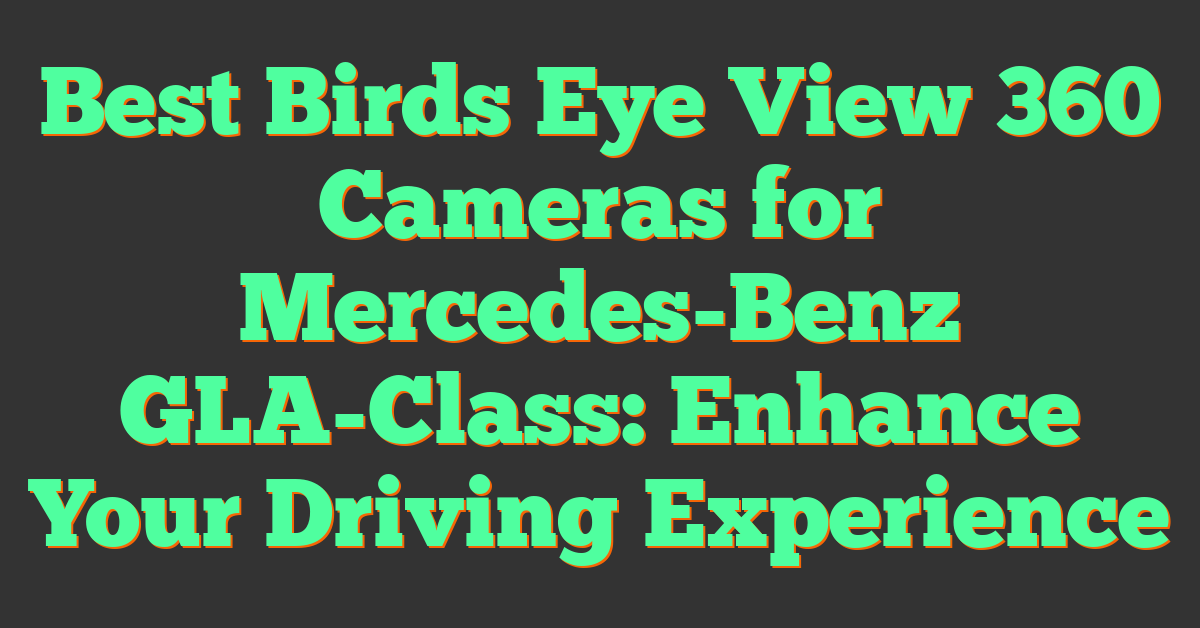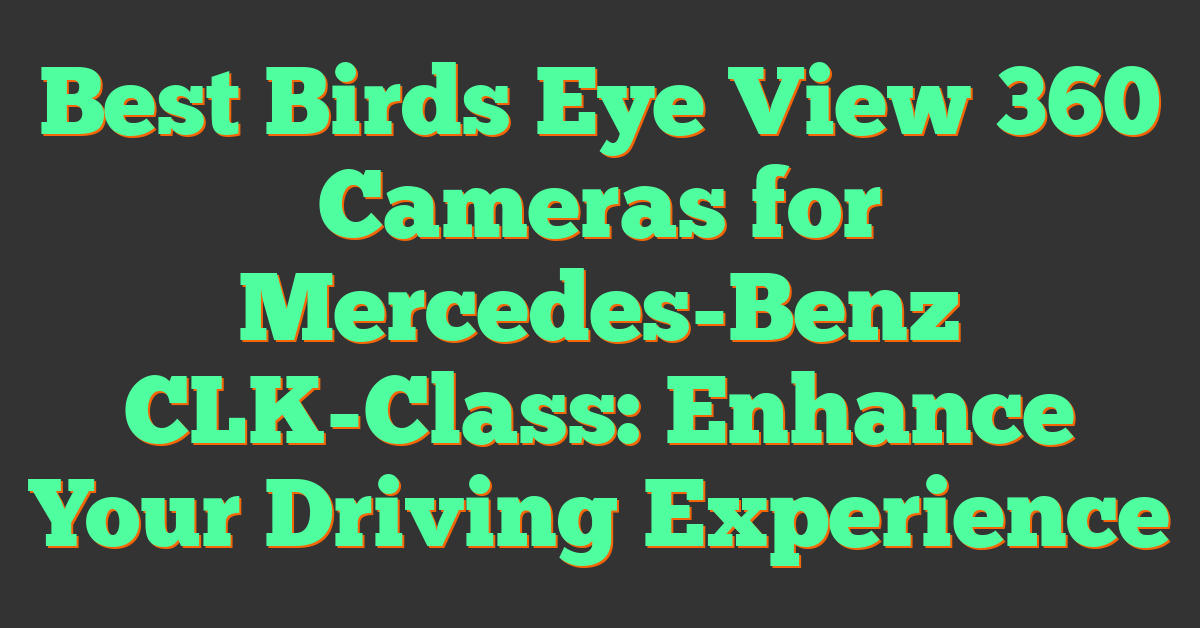Key Takeaways
- Night vision 360 cameras revolutionize wildlife photography by enabling clear, full-angle footage in low light or complete darkness.
- These cameras utilize infrared sensors and advanced imaging to capture nocturnal species without disturbing their natural behaviors.
- Key benefits include a 360-degree field of view, minimal animal disturbance due to silent operation, and the ability to produce high-resolution, immersive content.
- Look for features like excellent low-light performance, long battery life, and high-resolution capabilities (4K or higher) when choosing a camera.
- Popular models such as the Insta360 One RS, Ricoh Theta Z1, and Kandao Obsidian Pro offer cutting-edge technology for professional-grade results.
- Effective use involves strategic placement, optimized settings, and ensuring the camera remains discreet to avoid startling wildlife.
Capturing wildlife at night has always been a challenge, but night vision 360 cameras are changing the game. These innovative tools let me document nocturnal animals in their natural habitats without disturbing them, offering a whole new perspective on wildlife photography.
With their ability to see in complete darkness and cover every angle, these cameras open up endless creative opportunities. Whether it’s tracking elusive predators or capturing stunning nightscapes, the technology brings unmatched precision and clarity. Let’s dive into how these cameras can transform your nighttime wildlife photography.
What Are Night Vision 360 Cameras?
Night vision 360 cameras are specialized devices designed to capture full spherical footage in low light or complete darkness. Using infrared sensors and advanced image processing, these cameras can detect and amplify light that isn’t visible to the human eye. This technology is ideal for wildlife photography, especially when documenting nocturnal species in their natural habitats.
The “360” aspect means these cameras capture a full panoramic view at all times. Unlike traditional cameras that focus on a single direction, night vision 360 cameras allow users to explore every angle of the scene after filming or shooting. This makes them perfect for creating immersive virtual reality experiences or ensuring nothing goes unnoticed during nighttime shoots.
Key features include the ability to record high-resolution video, often in 4K or higher, and compatibility with infrared lighting accessories for enhanced visibility. Many models also come with rugged designs, built to withstand harsh outdoor conditions. For example, popular options from brands like Insta360 or Ricoh Theta offer weatherproofing and long battery life for extended wildlife sessions.
These cameras excel in silent operations, reducing the chance of disturbing the animals being photographed. Combined with their wide-angle capabilities, they provide a distinct advantage for capturing elusive species like owls, foxes, and other nocturnal predators without needing multiple setups. As a photography enthusiast, I believe these tools unlock creative possibilities that were once out of reach.
Benefits Of Using Night Vision 360 Cameras For Wildlife Photography
Night vision 360 cameras offer a unique set of advantages for capturing the natural world after dark. By combining cutting-edge night vision technology with spherical imaging, these devices open doors to extraordinary creative and educational opportunities.
Capturing Nocturnal Wildlife
These cameras excel in documenting nocturnal species like owls, bats, and foxes by functioning seamlessly in low-light conditions. Their infrared sensors amplify ambient light, revealing details invisible to the naked eye. For example, I’ve used a night vision 360 camera to record a bat’s hunting behavior, capturing moments that standard cameras couldn’t. This ensures photographers can document behaviors and ecosystems that only exist at night.
Enhanced Field Of View
A 360-degree field of view eliminates blind spots, providing full panoramic footage in every shot. This capability ensures that nothing in the environment is missed, even if an animal moves out of the frame of a traditional camera. When recording in dense forest areas, I rely on this feature to revisit footage later and explore the surroundings comprehensively. For wildlife videographers, it offers a perfect base for immersive virtual reality (VR) content creation.
Minimal Disturbance To Animals
« Top Security 360 Cameras with Motion Detection for Ultimate Home and Business Protection
Night Vision 360 Cameras: Setup Guide for Perfect Security & Stunning Nighttime Shots »
These cameras operate without generating disruptive light or sound, making them ideal tools for sensitive habitats. Their silent modes and infrared imaging allow you to observe natural behavior without fear of scaring animals away. I’ve found this particularly useful when documenting shy species like deer and nocturnal predators. Reduced disturbance means improved chances of capturing authentic, undisturbed moments in their natural environment.
By combining advanced imaging technology and ecological sensitivity, night vision 360 cameras redefine the possibilities for wildlife photography and videography.
Key Features To Look For In Night Vision 360 Cameras
Choosing the right night vision 360 camera plays a crucial role in capturing stunning wildlife imagery. With a strong background in 360 photography and the technology behind it, I look for specific features that enhance low-light performance, battery efficiency, and image clarity.
Low-Light Performance
Having excellent low-light performance ensures clear footage even in total darkness. Cameras with advanced infrared sensors and high ISO sensitivity work best for this purpose. I recommend models equipped with back-illuminated sensors, as they amplify ambient light effectively. Look for adjustable infrared intensity in the camera—this allows for precise exposure control without startling wildlife. Some premium options even feature noise reduction algorithms to retain detail in high-ISO conditions.
Battery Life
A reliable battery life is essential for long hours outdoors. Wildlife shoots often require extended periods of recording, especially when waiting for nocturnal species to appear. I suggest cameras offering at least 4-6 hours of continuous recording on a single charge. Cameras with removable and rechargeable batteries make longer sessions easier by allowing quick battery swaps. Some models support power banks via USB ports, extending runtime, which is another feature worth considering.
Resolution And Image Quality
High-resolution video quality guarantees immersive footage and intricate detail necessary for wildlife videography. Opt for cameras capable of at least 4K resolution, though 5.7K or 8K resolution options provide sharper results for post-production editing. Pairing high resolution with a wide dynamic range maximizes clarity while balancing exposure in varied lighting conditions. Cameras employing multi-lens setups deliver better stitching accuracy in 360-degree footage, ensuring seamless and professional results ideal for virtual reality projects.
Top-Rated Night Vision 360 Cameras For Wildlife Photography
Choosing the right night vision 360 camera elevates wildlife photography, ensuring crisp, immersive footage even in complete darkness. Based on my experience in the industry and the field, here are three exceptional models, each offering unique features for low-light 360-degree photography.
Camera 1: Features And Performance
The Insta360 One RS 1-Inch 360 Edition stands out for its high-resolution performance and versatility. It features dual 1-inch CMOS sensors, designed for exceptional low-light capabilities and sharp details in nighttime environments. With 6K 360 video resolution, it ensures optimal clarity, capturing intricate wildlife behaviors even in dense forests.
Its FlowState Stabilization technology delivers smooth footage regardless of movement, while the waterproof design allows usage in challenging conditions like rain or humid jungles. A battery life of up to 4 hours covers extended night shoots, and its modular structure accommodates easy upgrades or expansions.
Camera 2: Features And Performance
The Ricoh Theta Z1 remains a top pick, particularly for professional-quality capturing. Its two 1-inch back-illuminated CMOS sensors enable exceptional clarity in dim lighting, reducing noise effectively for nighttime work. The Z1 offers 4K 360 video and RAW image output, giving photographers superior flexibility during post-processing.
Its compact design makes it easy to transport, and the robust build handles rugged outdoor conditions. Silent operation minimizes wildlife disturbances, and its Wi-Fi and Bluetooth integration allow for remote control, simplifying placement near sensitive habitats.
Camera 3: Features And Performance
The Kandao Obsidian Pro excels in advanced imaging and panoramic precision. It boasts eight lenses, supporting 12K 360 video capture and delivering outstanding detail, essential for professional wildlife videography. With adjustable infrared sensitivity, it adapts seamlessly to diverse lighting conditions.
Built for extended field use, the Obsidian Pro includes a high-capacity battery lasting over 5 hours. Its heat-resistant shell ensures consistent performance even in varying temperatures, while the advanced stitching algorithm creates seamless spherical footage, critical for immersive VR experiences.
Tips For Using Night Vision 360 Cameras Effectively
Using night vision 360 cameras in wildlife photography requires strategic techniques to maximize their potential. Based on my experience with 360 cameras, these tips can help capture immersive, high-quality nocturnal content.
Positioning Your Camera
Placing the camera at strategic spots increases the chances of capturing dynamic wildlife encounters. I ensure the camera is positioned at ground level for small mammals like foxes or at elevated angles for birds such as owls. Using natural features like trees or rocks provides stability and blends the camera with the environment. When dealing with dense forests, I pick open areas within animal pathways to eliminate obstructions in the 360-degree field of view.
Adjusting Settings For Optimal Results
Optimizing the camera’s settings is crucial for clear, detailed nighttime footage. I start by activating high ISO settings, sometimes up to 6400, balanced carefully to prevent excessive noise. If the camera offers adjustable infrared intensity, I reduce the brightness in closer setups to avoid overexposure. I always shoot in the highest available resolution, like 4K or higher, to preserve intricate details of animal movements, and I enable RAW format for easier adjustments during post-processing.
Ensuring Camera Stealth
Minimizing camera presence is vital to avoid scaring wildlife. I prefer using a camera with silent operation modes and no visible glowing indicators. Covering any reflective surfaces with matte tape or camouflage sleeves helps the camera blend into natural surroundings. When I attach optional infrared lights, I use low-profile mounts and lower brightness levels to stay undetected by sensitive species like deer.
Conclusion
Night vision 360 cameras have transformed the way we approach wildlife photography, opening up new possibilities for capturing the beauty of nocturnal animals in their natural environments. Their advanced technology, combined with thoughtful features, allows for immersive, high-quality footage without disturbing the ecosystem.
Whether you’re documenting elusive species or exploring creative storytelling, these cameras provide the tools needed to elevate your nighttime photography. With the right equipment and techniques, the wonders of the nocturnal world are yours to discover and share.















